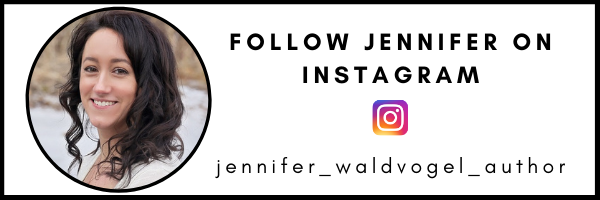TL;DR:
- Taking risks makes teaching more exciting and fulfilling.
- Start small with change to accomplish more in the long run.
- Risk-taking is easier for students when we build them a safety net.
- Failure is natural. Show students it’s okay to fail as long as we try again.
Growing up, we’re taught to be careful: to wear helmets and knee pads and look both ways. We drill for fires and tornadoes, practice defensive driving, and avoid unsolicited communication. Somewhere along the way, the world becomes a place filled with dangers. But there is another kind of danger that threatens our daily lives much more than these “What If “disaster scenarios. It’s the danger of staying in the Status Quo. When we approach life as a cautionary tale, we don’t take risks, and risks are the precursor to a vital, authentic life.
Taking risks isn’t about the absence of fear. It’s about taking action despite our fear. When we feel the knot in our gut before a conversation, it’s the conversation we need to have. When we feel the jitters before a public comment, it’s the stand we need to take. And when we catch our breath before a leap, we’re in the right spot at the right time.
Risks are scary because we can’t guarantee the outcome. When we tell another person how we feel, they may object or withdraw. But they can also connect and inquire. This is why it’s critical to speak candidly with leaders, colleagues, and students. Ambiguity is far scarier than the real deal. When leaders, colleagues, and students do not have to guess our feelings and intentions, we build the kind of relationships that can handle risk.
So let’s imagine we’re interested in the risk. Where do we begin? Start with these three ways to build a culture of risk-taking at school.
1. Build a Safety Net for Students.
We can help students take risks by offering them a safety net, which means starting risks with low-stakes, practice activities.
Want students to drive their own inquiry project?
- Begin small with essential questions.
- Practice guided reflections with Save the Last Word.
- Host frequent teacher/student conferencing.
Help students get comfortable with not being given the answers and they’ll begin to drive themselves through curious exploration. The key is not penalizing students for practice, minimizing requirements to the most important, and offering guidance when they get stuck. Let the final project be a celebration of their discoveries rather than an evaluation of their research and we will have opened the door to many more days of exploration.
When we feel the knot in our gut before a conversation, it's the conversation we need to have. When we feel the jitters before a public comment, it's the stand we need to take. - Jennifer W. Click To Tweet2. Wade In to New Risks.
At school, I’m a notoriously “jump in the deep end” kind of girl, which is ironic, because I can barely swim. That’s not a metaphor. I would literally drown if left in a deep body of water for more than a minute. But when it comes to teaching, coaching, and instructional leadership, I love a good cannonball. It’s so exciting to try something new and audacious. To have an idea and run with it. To surprise students with a text, a thought, a question that invites them to look beyond the surface and stretch their skills. But if we’re getting started in the risk-taking game, wading in is a much better strategy than taking the boat a couple of miles offshore. Wade in by deciding to change just one part of your classroom.
Start with changing how we open class.
- Begin with a short breathing exercise, chair yoga, or mandala coloring session to set a calming tone.
- Post a quote or thought-provoking question for students to journal or discuss in small groups. Try Auto Classmate’s Would You Rather Question Generator
Or change how we close class.
- Save three minutes at the end of class for students to take turns sharing what inspires them. Create a digital assignment or slideshow to collect student contributions early on so they’re ready to share any day. Use a random name generator through Classroom Screen or Wheel of Names to pick the sharers of the day.
- Collect information about students’ hobbies and habits in a digital survey. Turn responses into Class Trivia and play a few questions for the last couple minutes of class each day.
Or maybe just a moment in the middle.
- Give students the chance to spin as Class DJ. During transition time, play a song from that day’s DJ. To have a ready source, create a digital assignment in your LMS (Canvas, Google Classroom, etc.) to house song choices or a digital form to collect titles for a playlist.
- Stream nature scenes like the Cornell FeederWatch Cam before tests and between challenging activities. Help students center and reset in the ways we’re naturally drawn to.

3. Fail with Dignity.
Failure can feel embarrassing, especially when it happens in front of others. But if we remember the athletes who miss goals, or the investors who take financial risks that don’t pay, or the leaders who make changes that prompt staff disgruntlement, we see that failure is everywhere. The difference between those who fail and those who succeed is whether the failure is a launchpad or a closed door. Whether the failure is bad luck or a learning experience.

Photo by Michael Dziedzic on Unsplash
We can help students move forward from failure by offering frequent opportunities to self-evaluate.
- Match test questions and learning activities to specific skills.
- Be transparent about which activities and questions hit each skill.
- Provide class time for students to set goals related to the challenges they identify after a pretest.
- Host a data dig to capture strengths and challenges in a unit.
Whether we have safety nets, small steps forward, or dignified failure, risks are always going to feel a little scary. But it’s that good kind of scary that yields adventure and that’s far more fulfilling than sitting comfortably in the tried and true. So next time you’re feeling a little nervous about a new idea, remember that embarrassment is temporary and novelty is the best way to learn.
About Jennifer Waldvogel
Jennifer Waldvogel fell in love with teaching because she’s an optimist at heart and believes the possibilities inside classrooms are endless. She currently serves as a Teacher on Special Assignment for Technology Integration in Yorkville District 115, working alongside students, teachers, school & district leaders to guide blended programming, design professional development, and coach personalized instruction.
Jen is a National Board Certified teacher who spent over a decade teaching writing and literature to high schoolers. After a transformative blended learning pilot, she shifted into the role of TOSA to support student success at a global level in Yorkville’s Teaching & Learning Department. Ever curious, Jen enjoys PD- if she had the time and money, she’d be in school forever- engaging in conferences and workshops, where she has presented at the local, state, and national level about learning pathways, personalized PD, mindfulness, blended learning, student motivation, and ways to maximize your LMS. She is honored to have been awarded the 2019 Illinois Computing Educator of the Year.
Jen holds a Bachelor’s from the University of Illinois (Psychology), Secondary Ed from North Central College (Language Arts), and Master’s from Northern Illinois University (School Counseling). Publications include Midwest Poetry Review, The Storyteller Magazine, Educational Leadership (2019), and Ideas to Connect Your Classroom (2020). Jen is also a published novelist, Untouchable (2016), who blogs at jenniferwaldvogel.com.
Jen is a proud wife and mom, enjoying hiking, travel, and foodie adventures with her family. She loves Walt Whitman, Key West, and music you can dance to. Writing is her favorite hobby.
Connect with Jennifer on Instagram, LinkedIn, or her website.



